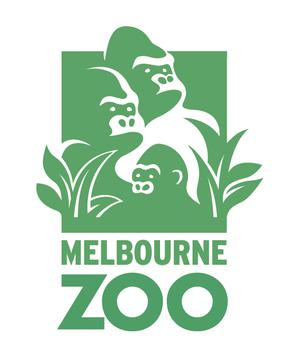
Melbourne Zoo is a zoo in Melbourne, Australia. It is located within Royal Park in Parkville, approximately 4 kilometres (2.5 mi) north of the centre of Melbourne. It is the primary zoo serving Melbourne. As of 2021 the zoo contains 3742 animals comprising 243 species, from Australia and around the world. The zoo is accessible via Royal Park station on the Upfield railway line, and is also accessible via tram routes 58 and 19, as well as by bicycle on the Capital City Trail. Bicycles are not allowed inside the zoo itself.
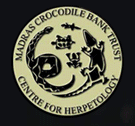
The Madras Crocodile Bank Trust and Centre for Herpetology (MCBT) is a reptile zoo and herpetology research station, located 40 kilometres (25 mi) south of the city of Chennai, in state of Tamil Nadu, India. The centre is both a registered trust and a recognized zoo under the Wildlife (Protection) Act, 1972 and comes under the purview of the Central Zoo Authority, Ministry of Environment, Forest and Climate Change, Government of India. It was established with the aim of saving three Indian endangered species of crocodile—the marsh or mugger crocodile, the saltwater crocodile, and the gharial, which at the time of founding of the trust were all nearing extinction.
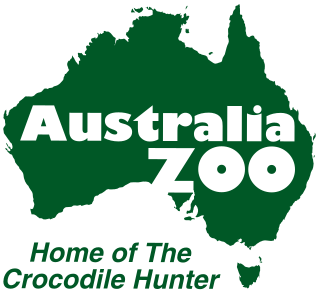
Australia Zoo is a 700-acre (280 ha) zoo in the Australian state of Queensland on the Sunshine Coast near Beerwah/Glass House Mountains. It is a member of the Zoo and Aquarium Association (ZAA), and is owned by Terri Irwin, the widow of Steve Irwin, whose wildlife documentary series The Crocodile Hunter and his family's new show Crikey! It's the Irwins made the zoo a popular tourist attraction.

Gladys Porter Zoo is a zoological and botanical park located in Brownsville, Texas, United States. The zoo officially opened on September 3, 1971, and currently averages over 424,000 visitors annually. Situated on 31 acres (13 ha), the zoo houses about 400 animal species and over 250 tropical and neo-tropical species and subspecies. It is the first zoo to have successfully bred the endangered Jentink's duiker. It is also the birthplace of Harambe, the gorilla.

Shoalhaven Zoo, formerly the Nowra Animal Park, is an animal park on the South Coast of New South Wales, Australia.

The St. Augustine Alligator Farm Zoological Park is one of Florida's oldest continuously running attractions, having opened on May 20, 1893. It has 24 species of crocodilians, and also a variety of other reptiles, mammals and birds, as well as exhibits, animal performances and educational demonstrations.

The Australian Reptile Park is located at Somersby on the Central Coast of New South Wales, Australia. It is about 71 kilometres (44 mi) north of Sydney, and is just off the M1 Pacific Motorway, near Gosford. The Park has one of the largest reptile collections in Australia, with close to 50 species on display. The wide variety of reptile species at the Park includes snakes, lizards, turtles, tortoises, tuataras, American alligators and crocodiles.
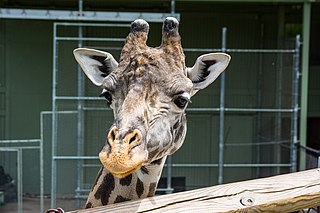
The American Species Survival Plan or SSP program was developed in 1981 by the (American) Association of Zoos and Aquariums to help ensure the survival of selected species in zoos and aquariums, most of which are threatened or endangered in the wild.
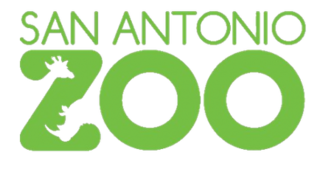
The San Antonio Zoo is an Association of Zoos and Aquariums-accredited zoo in Midtown San Antonio, Texas, United States. It is located in the city's Brackenridge Park. San Antonio Zoo is a 50+ acre zoo home to over 750 species, some of which are endangered or extinct in the wild, and an annual attendance of more than 1 million. It also runs non-animal attractions, such as the 2 ft narrow gauge San Antonio Zoo Eagle train ride, which first opened in 1956.

Shanghai Zoological Park, or commonly Shanghai Zoo in short, is the main zoological garden in Shanghai. It is located near the township of Hongqiao and is administratively in Changning District. Shanghai Zoo was formerly known as " Xijiao Park", which is still a common name used locally for the zoo.
Halls Gap Zoo is a country 53-acre (21 ha) zoo located about 7 kilometres (4.3 mi) from Halls Gap, Victoria, Australia. From the zoo you can see Grampians National Park. It is Victoria's largest regional zoo, holding over 160 native and exotic species.

Barcelona Zoo is a zoo in the Parc de la Ciutadella in Barcelona, Catalonia, Spain. The zoo used to be internationally known as the home of Snowflake, the only known albino gorilla, who died in 2003.

Wildlife HQ Zoo, is located at the Big Pineapple, Woombye, Queensland on the Sunshine Coast, Queensland and opened in November 2013. In March 2014 many animals were relocated from the now closed Alma Park Zoo.

Hartley's Crocodile Adventures is a 10-hectare (25-acre) wildlife sanctuary and ecotourism park located between Cairns and Port Douglas at Wangetti in Far North Queensland, Australia. It adjoins the world heritage listed Wet Tropics of Queensland rainforest through which visitors can take guided or self-guided walks.

Gorge Wildlife Park is a privately-owned sanctuary in the Australian state of South Australia. It is at Cudlee Creek in the Adelaide Hills and continues to be operated by the same family that established it in 1965. It is 30 km northeast of Adelaide. Situated on 14 acres of land, under shaded trees, paths meander among the largest privately owned collection of Australian animals. The park provides contact with a range of Australian native animals as well as exhibits of Australian and exotic animals and birds. A feature is the opportunity for visitors to hold a koala.

Darling Downs Zoo is a zoo situated in Pilton, Queensland, Australia. The zoo is divided into four separate geographical areas featuring animals mostly from Africa, South America, South-East Asia and Australia.

Snakes Downunder Reptile Park and Zoo is a zoo situated in Childers, Queensland, Australia. The zoo features Australian reptiles, amphibians and marsupials as well as meerkats.

Symbio Wildlife Park is a privately owned medium sized zoo located in Helensburgh, New South Wales, south of Sydney and in close proximity to the City of Wollongong. Beginning in 1975 as a native Australian wildlife park, Symbio later expanded its holdings with a number of different animals from other countries also, and has contributed to conservation work and captive breeding programs for both Australian and exotic animals. In 2021 the park established specialty built captive-breeding facilities for native vulnerable and endangered Bellinger River snapping turtles, Manning River snapping turtles and Stuttering frogs. Among Symbio's animal residents is an albino echidna named Leo.

Crocosaurus Cove is a crocodile herpetarium and aquarium zoo located in an indoor complex in the city district of Darwin, Northern Territory, Australia. Its main focus as the facility's name indicates is the tourism drawcard of the crocodiles of northern Australia. The park has a considerable number of saltwater crocodiles including 700kg and 5.1 metre long male Burt, who appeared in 1986 movie Crocodile Dundee and made news in 2018 for 'psychic predictions' outcomes of the 2018 Soccer World Cup by reaching up and grabbing photographs of players which was seen as match and player performance 'predicting'. The facility has also had success with breeding and hatching baby crocodiles including in July 2022 with baby crocodiles hatched to parent crocodiles female Kate and male William. One of the things most well known at the facility which significantly increased visitor numbers is a 'cage of death' experience where paying visitors can swim in water with large crocodiles while protected from physical contact with them by being enclosed behind a glass safety dome. As previously mentioned a significant number of other native Australian reptiles are also kept at the facility and publicly exhibited. Mick Burns the owner is also owner of Darwin Crocodile Farm.



















